The spectacle is loud. The fanservice is abundant. The plot twists are “shocking.” But when the credits roll, do you actually remember what happened? Or more importantly—did anything really happen at all? If you feel that way, you’ve probably fallen victim to one of the many examples of the laziest anime tropes.
Anime has given us some of the most innovative, emotionally devastating, and intellectually challenging stories in modern media. From the psychological warfare of Death Note to the existential philosophy of Serial Experiments Lain, from the raw humanity of March Comes in Like a Lion to the masterful world-building of Monster—the medium has proven time and again that it can deliver narratives as sophisticated as any prestige television drama or acclaimed film.
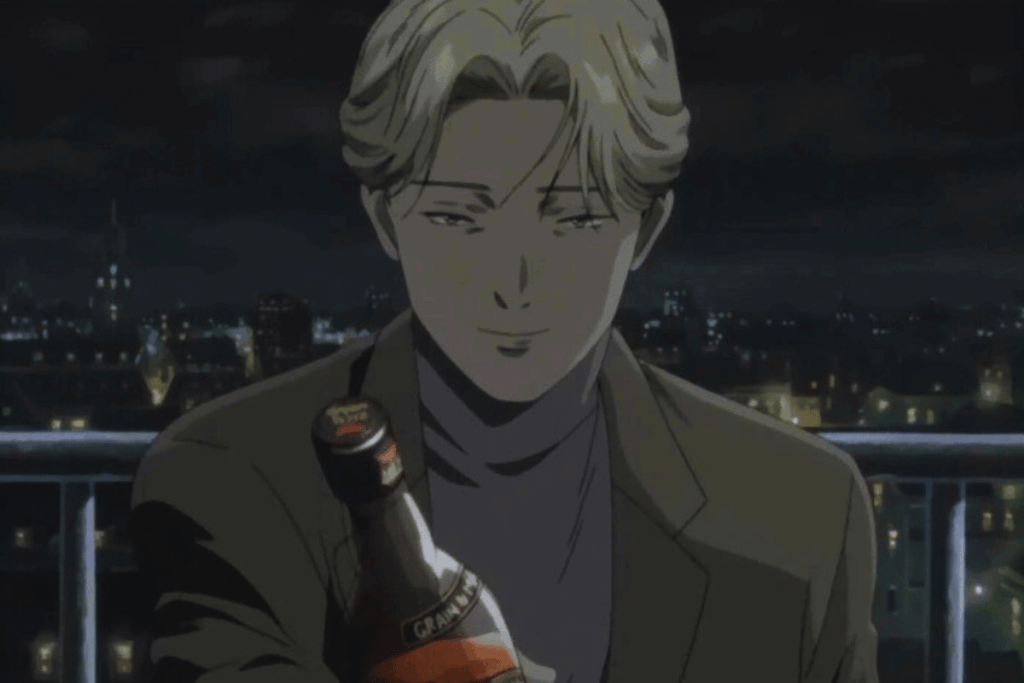
So why are we still accepting the same recycled garbage?
Let’s be honest with ourselves. That rush you get from watching the overpowered protagonist effortlessly demolish his opponents? Pure dopamine hit disguised as storytelling. The “accidental” groping scene that somehow happens in every beach episode? A crutch masquerading as comedy. The power-of-friendship speech that magically turns the tide of battle? Emotional manipulation pretending to be earned sentiment.
You’re smarter than this. And you deserve anime that respects your intelligence.
The Isekai Industrial Complex: Power Fantasy as Narrative Coma – Laziest Anime Tropes
Let’s start with the elephant in the room: the isekai oversaturation. We’re not talking about well-crafted isekai like Re:Zero or The Twelve Kingdoms. We’re talking about the assembly-line productions where a bland protagonist dies, gets reincarnated with cheat abilities, immediately acquires a harem of devotees, and faces zero meaningful challenges.
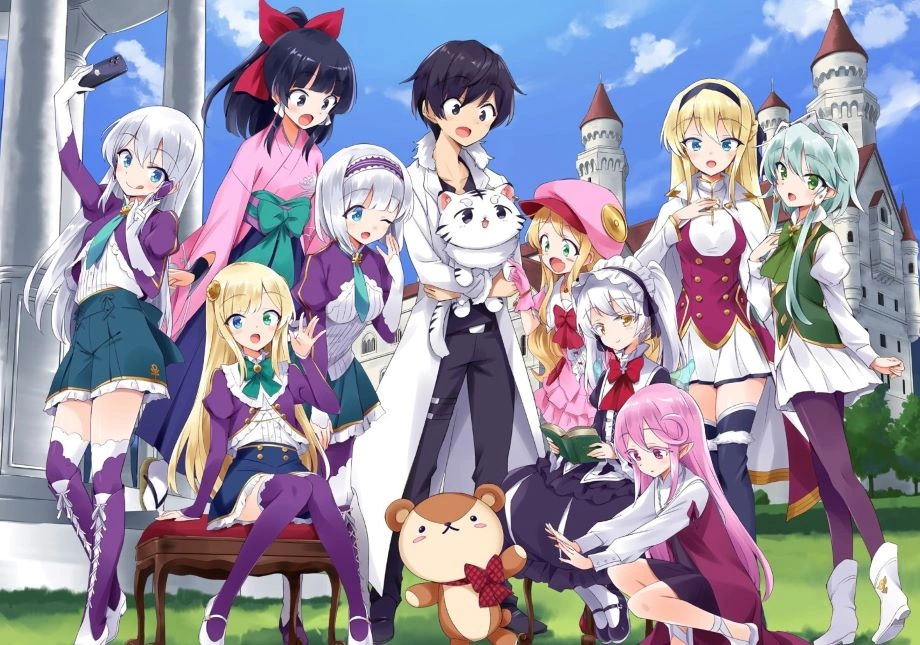
Entertainment requires more than wish fulfillment for people who’ve given up on actual character development.
The core problem goes beyond the isekai premise itself. These shows have discovered they can profit from your lizard brain without engaging your actual brain. They’ve cracked the code: give viewers a protagonist who never struggles, never grows, never questions himself, and never fails in any meaningful way. Sprinkle in some RPG terminology and stat screens. Add a few women who exist solely to admire him. Rinse. Repeat. Profit.
What you’re actually watching: A glorified screensaver with dialogue.
What you could be watching: Stories where characters earn their victories through wit, sacrifice, and genuine growth. Where being transported to another world actually means something and changes the protagonist in fundamental ways.
The tragedy is that every hour you spend watching Generic Isekai #47 is an hour you could’ve spent watching Mushishi, Vinland Saga, or Odd Taxi—shows that trust you to handle complexity, ambiguity, and actual stakes.
Fanservice: The Narrative Cyanide Pill – Laziest Anime Tropes
Let’s address the uncomfortable truth: fanservice has become anime’s most reliable way to paper over weak writing. Can’t write interesting female characters? Make them fall over in compromising positions every five minutes. Can’t create romantic tension? Just have the camera linger on body parts while characters spout innuendo. Can’t earn emotional investment? Throw in a hot springs episode and call it “character development.”
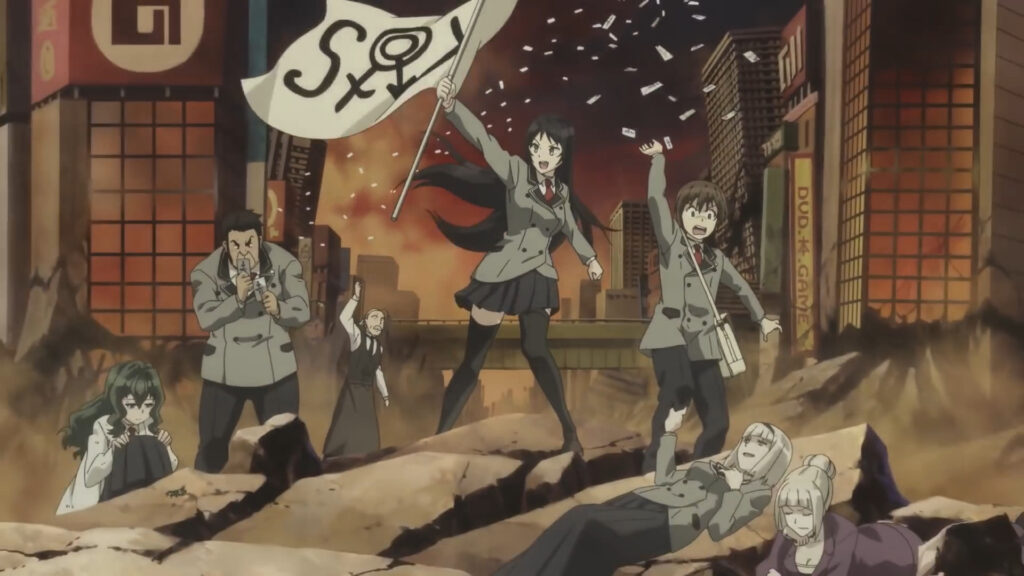
Recognizing when you’re being actively disrespected as a viewer matters more than maintaining some false neutrality about artistic choices.
When a show interrupts its own dramatic tension to give you an upskirt shot, it’s telling you something: the creators don’t believe their story is good enough to hold your attention. They don’t trust their characters, their plotting, or their themes. So they’re bribing you with the visual equivalent of jingling keys in front of a baby.
And you’re not a baby.
Shows like Cowboy Bebop, Steins;Gate, and A Place Further Than The Universe prove that anime can create compelling, attractive characters without reducing them to T&A delivery systems. These series understand that sensuality and sexuality can exist within a story without hijacking it. They respect both their characters and their audience enough to let moments of attraction feel genuine rather than exploitative.
Compare that to the show that pauses mid-battle so the camera can rotate 360 degrees around a female character’s body while her clothes are conveniently shredded. The insult becomes clear: the creators are saying, “We know our battle choreography is boring, so here’s some ass to keep you engaged.”
You deserve creators who try harder.
The Power of Friendship: Emotional Manipulation Disguised as Heart – Laziest Anime Tropes
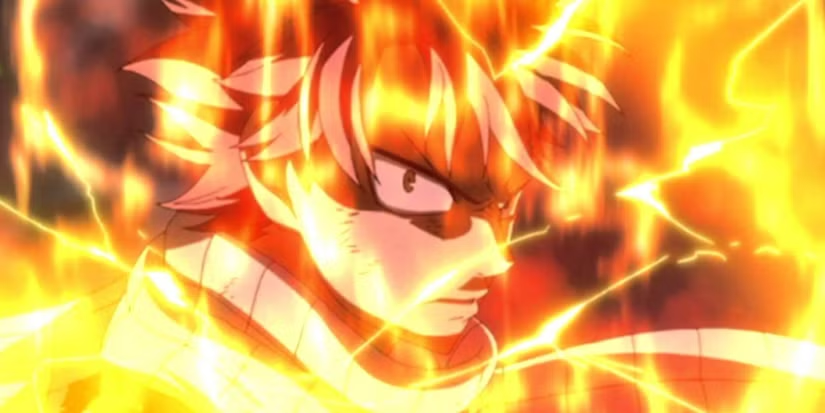
Few things in anime are as simultaneously beloved and creatively bankrupt as the power-of-friendship climax. You know the scene: the protagonist is losing, badly. The villain monologues about strength and solitude. Then someone shouts the protagonist’s name, or shows up with words of encouragement, or appears in a flashback. Suddenly, unexplainably, the protagonist unlocks new power and wins.
Storytelling requires more than shortcuts.
Writers who know they need an emotional climax but haven’t done the work to earn one through proper character development, thematic resonance, or logical plot progression reach for this tired device every time.
Real friendship—the kind that matters in meaningful narratives—is complicated. It involves sacrifice, conflict, misunderstanding, reconciliation, and growth. It costs something. Look at the friendship between Guts and Griffith in Berserk, or the bond between the Survey Corps in Attack on Titan during its early seasons, or the evolving relationship between Shinji and Kaworu in Evangelion.
These friendships matter because they’re tested. They break. They require something from the characters. They operate within the story’s logic rather than magically overriding it when convenient.
When friendship becomes a literal superpower that activates on command, it stops being meaningful and starts being a narrative cheat code. It teaches you to expect unearned victories. It trains you to be satisfied with emotional beats that haven’t been properly set up. It makes you accept that consequences don’t matter as long as someone believes in you hard enough.
Think of it as the storytelling equivalent of processed sugar—immediately satisfying, ultimately empty, and actively bad for you if it’s all you consume.
The Tsundere, The Manic Pixie Dream Girl, The Childhood Friend: Archetypes as Character Assassination – Laziest Anime Tropes
Character archetypes become dangerous when creators treat them as endpoints rather than starting points. Used well, they’re shortcuts that can quickly establish a character’s role and behavior patterns so the story can subvert, complicate, or develop them into actual people. Modern anime increasingly treats these archetypes as the finish line.
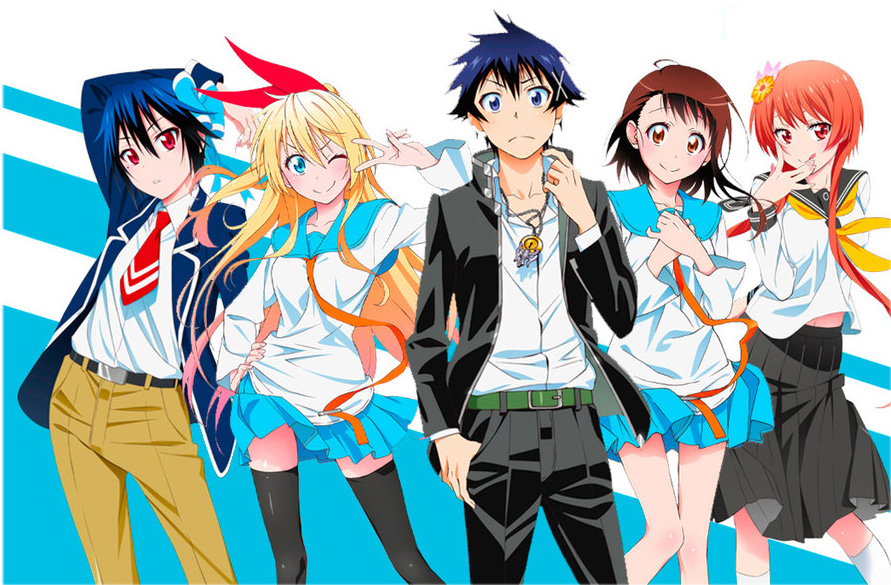
How many times have you watched a show where a character’s entire personality amounts to “tsundere”? She hits the protagonist (ha ha, abuse is funny when women do it!), denies her feelings in increasingly transparent ways, and never develops beyond this single-note performance. She doesn’t have goals, fears, contradictions, or a life outside of her prescribed romantic role. She exists as a checklist item rather than a character.
The same pattern applies to every other archetype that’s been flanderized into oblivion. The genki girl who exists solely to be energetic. The kuudere whose emotional unavailability is never explored as an actual character trait with roots and consequences. The childhood friend whose entire arc amounts to “loses to the new girl.” The yandere whose mental illness is played for comedy or fetishization.
These figures function as products rather than characters.
They exist because market research has determined that certain personality types sell merchandise and generate fan art. They’re designed not to tell stories but to activate specific emotional responses in specific demographics. They’re what happens when the creative process becomes fully commodified.
The cruel irony? Anime has given us some of the most fully realized female characters in any medium. Major Motoko Kusanagi. Casca. Balsa. Lady Eboshi. Revy. Kumiko Oumae. These are characters with agency, complexity, contradictions, and depths that reveal themselves over time. They have lives, philosophies, skills, flaws, and arcs that don’t revolve around male protagonists.
But you wouldn’t know it from watching the average seasonal anime, where female characters are sorted into their designated archetype boxes and left there to collect dust.
Sakuga Over Substance: When Animation Becomes the Emperor’s New Clothes – Laziest Anime Tropes
Let’s talk about the newest way anime gets you to overlook bad writing: the spectacle trap.
A character you don’t care about fights another character you don’t care about for stakes that haven’t been established, but the animation is gorgeous. Sixty seconds of fluid motion, dynamic camera angles, spectacular effects, and jaw-dropping choreography. The combat sakuga compilation gets millions of views on YouTube.
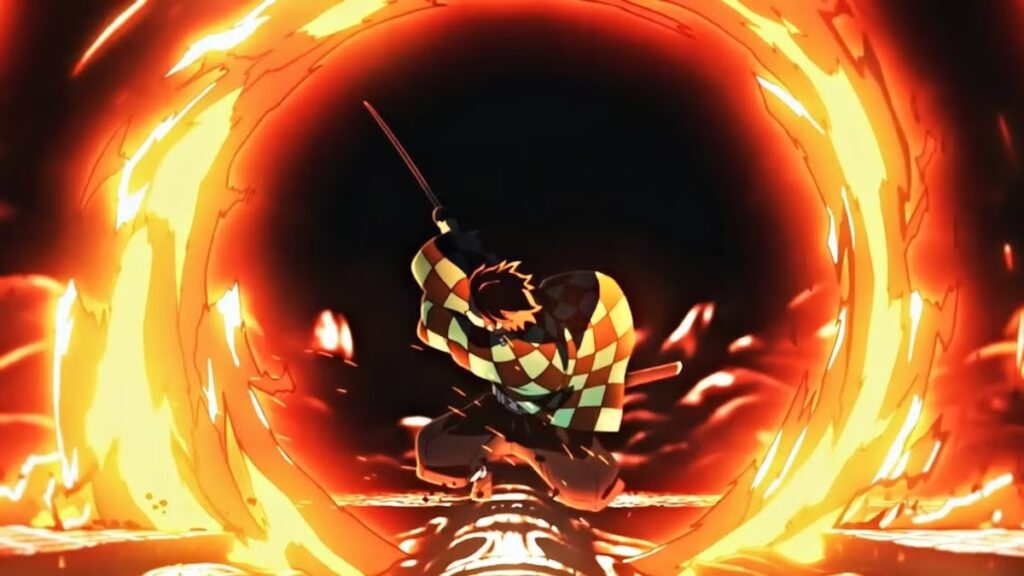
And you forget you have no idea why they’re fighting or what it means if either of them wins.
The evolution of the problem becomes clear when you compare eras. Older lazy anime would just have bad animation and bad writing. Modern lazy anime has discovered it can distract you from bad writing with good animation. It’s more insidious because it feels like you’re watching something of quality.
But animation—no matter how stellar—functions as a delivery system. It’s the vehicle for the story, never a replacement for it. When Mob Psycho 100 delivers its spectacular fight sequences, they matter because we understand exactly what’s at stake emotionally and thematically. When Demon Slayer gave us the Hinokami Kagura moment, the animation was stunning, but what made it resonate was the emotional weight of Tanjiro remembering his father and channeling that memory into his resolve.
Strip away that context, and you just have pretty lights.
The sakuga-first approach teaches you to value form over function, style over substance. It conditions you to think a show is good because it looks good, regardless of whether it has anything to say or any coherent way of saying it. Consider it the anime equivalent of a pop song with a great beat but nonsensical lyrics—fun in the moment, forgotten immediately after.
The “Subversion” That Falls Flat: Dark Doesn’t Mean Deep – Laziest Anime Tropes
In the wake of shows like Madoka Magica and Attack on Titan, there’s been an exhausting trend of anime that mistakes darkness, violence, or shock value for profundity.
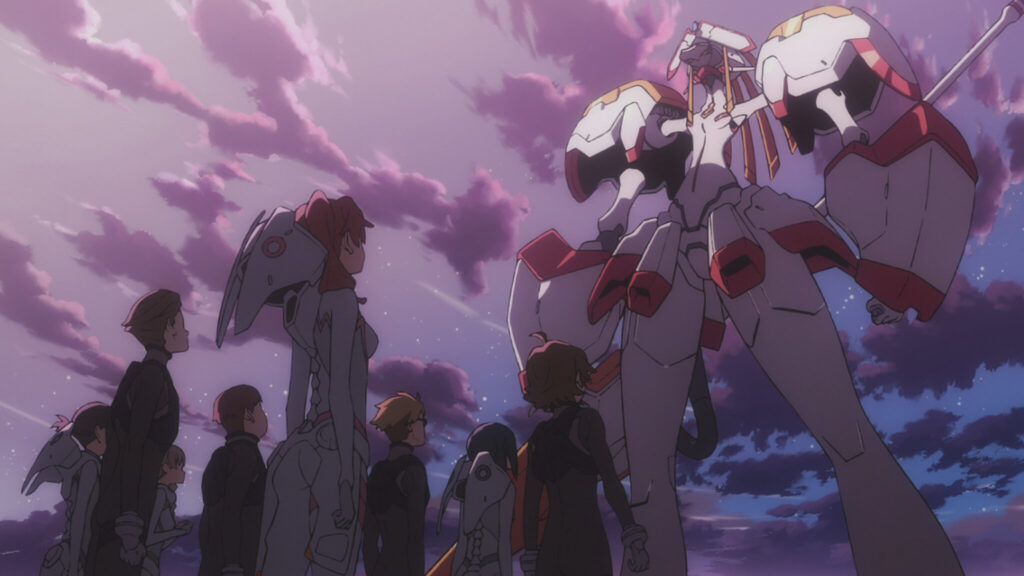
A cute character dies suddenly! A trusted ally betrays everyone! The villain was right all along! These events don’t automatically indicate sophisticated storytelling. Increasingly, they’re deployed cynically to generate buzz and controversy rather than to serve any thematic purpose.
True subversion requires something to subvert against—a genuine engagement with the anime tropes and expectations you’re overturning, and a reason for doing so beyond simple shock value. Evangelion went far beyond “what if the robot pilot was depressed?”—it offered a comprehensive deconstruction of mecha anime, otaku culture, and the psychological costs of using children to fight adult wars.
When your “dark and mature” anime just has characters suffering without purpose, when the plot twists don’t illuminate character or theme but exist solely for the twist, when the violence has no weight because the show hasn’t made you care about who’s being hurt—you’re watching edgelord posturing rather than sophistication.
And you’re nodding along, thinking you’re watching something challenging and adult, when really you’re just watching misery porn with an animation budget.
The Trap of “Turn Your Brain Off” Entertainment – Laziest Anime Tropes
Here’s where defenders of these anime tropes usually make their stand: “It’s just entertainment! Not everything has to be deep! Sometimes I just want to turn my brain off and enjoy something!”
Let’s dissect this argument, because it reveals the core problem.
First: the idea that entertainment and intelligence are opposites is demonstrably false. One Piece is entertaining as hell and also explores themes of freedom, justice, inherited will, and the cost of dreams. Fullmetal Alchemist: Brotherhood is a thrilling adventure that also examines sacrifice, the nature of humanity, and the price of ambition. Entertainment and substance function as symbiotic elements when creators actually try.
Second: “turning your brain off” carries more consequences than you think. Consider it training. Every time you accept lazy writing, tired anime tropes, and cheap tricks, you’re teaching yourself that these things are acceptable. You’re lowering your standards. You’re making it harder to recognize and appreciate genuinely good storytelling when you encounter it.
You’re also telling the industry that they don’t have to try. That they can keep churning out the same recycled content because you’ll watch it anyway. You become complicit in the race to the bottom.
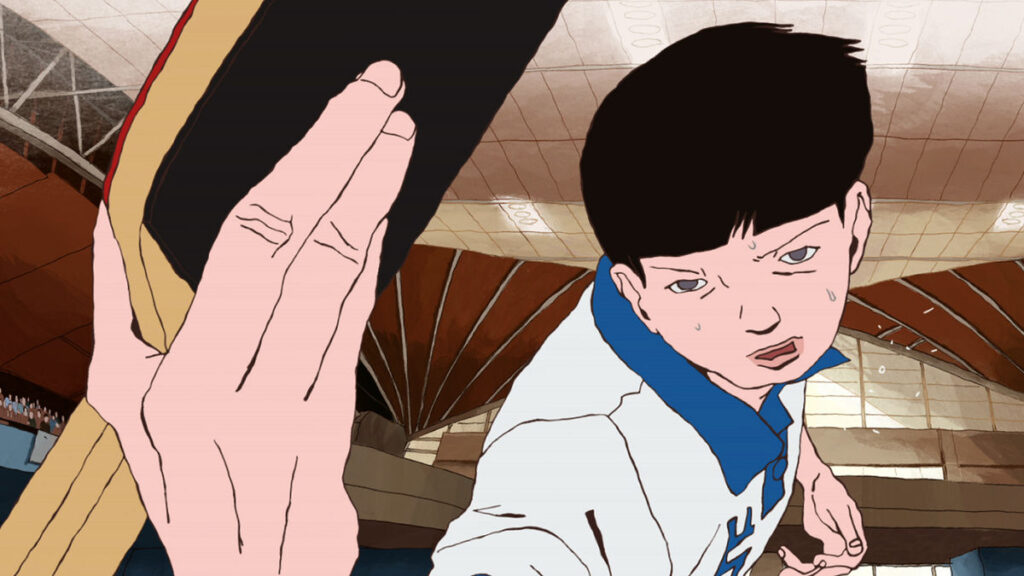
Third: your time is limited. You will not live long enough to watch every anime that exists. Every hour you spend on disposable seasonal trash is an hour you’re not spending on the shows that could genuinely move you, challenge you, or change your perspective. It’s an hour you’re not spending on Ping Pong the Animation, Showa Genroku Rakugo Shinju, Sonny Boy, Land of the Lustrous, or dozens of other series that respect your intelligence.
The question goes beyond whether you’re allowed to enjoy “dumb” entertainment. The real question is whether you’re settling for scraps when you could be having a feast.
What We’re Really Talking About: Respect
Strip away all the specific complaints about specific anime tropes, and you’re left with a fundamental issue: respect.
The anime that rely on these tired tricks don’t respect you. They don’t respect your time, your intelligence, or your capacity for appreciating nuance and complexity. They’ve calculated that you’re easier to please with familiar patterns and base-level stimulation than with original ideas and emotional authenticity.
And they’re right—as long as you keep proving them right.
But you can change that equation. You can decide that your attention is valuable and that you’ll only give it to shows that earn it. You can seek out anime that trusts you to handle ambiguity, that doesn’t need to spell out every theme in dialogue, that lets characters grow rather than resetting them to factory settings every arc.
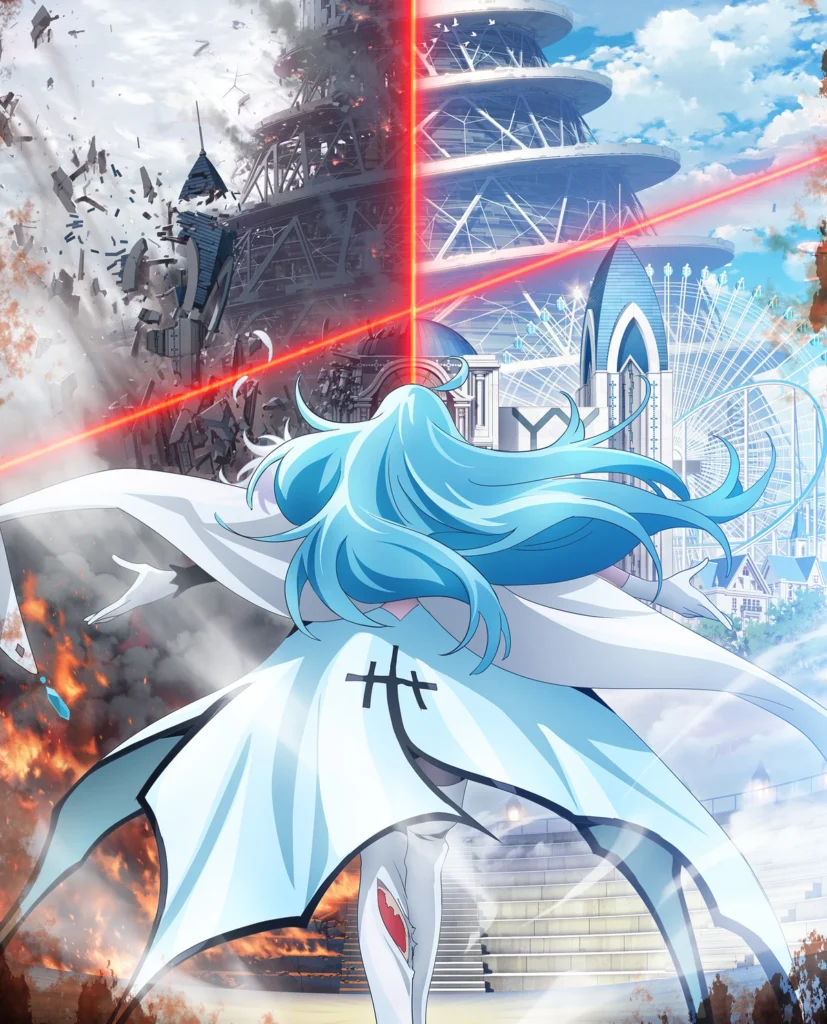
The shows are out there. Monster is a masterclass in deliberate pacing and moral ambiguity. The Tatami Galaxy rewrites the same events from new perspectives to explore regret and possibility. Eizouken is a love letter to the creative process itself. Ranking of Kings looks like a children’s show, but delivers some of the most nuanced character work in recent anime. Vivy: Fluorite Eye’s Song uses its sci-fi premise to examine identity and purpose. Heike Monogatari adapts classical literature with stunning visual poetry.
These shows exist at every budget level, in every genre, from every era of anime. They’re not obscure or inaccessible. They’re just not algorithmically pushed to you because they require something from you beyond passive consumption.
The Challenge
Here’s what I want you to do. Next time you’re about to start a new anime, ask yourself these questions: Does this show trust me to be intelligent, or does it explain everything? Are the characters making choices based on their personalities and goals, or based on what the plot requires? Are women written as people with agency, or as archetypes serving male characters’ stories? Is the show using spectacle to enhance the story, or to replace it? Am I being asked to engage with themes and ideas, or just to consume content? Will I remember this show in six months, or is it disposable?
Be honest in your answers. And if you realize you’re about to watch something that fails most of these tests, consider watching something else instead.
You’re not obligated to become a snob who only watches avant-garde experimental anime. But you can be a more conscious consumer who recognizes when you’re being sold junk food and chooses to seek out something more nourishing.
Because here’s the truth that the anime industry doesn’t want you to realize: you have power. Your attention drives revenue. Your word-of-mouth drives popularity. Your standards drive quality.
When you accept less, the industry gives you less. When you demand more, the industry produces more. It’s that simple and that difficult.
These tired anime tropes persist because they work—because we let them work. They’ll stop when we stop rewarding them with our time and attention.
You Deserve Stories That Matter
Anime at its best is transformative. It can make you feel things you didn’t know you could feel, understand perspectives you’d never considered, and see the world with fresh eyes. It can be funny, devastating, thought-provoking, and visually stunning all at once.
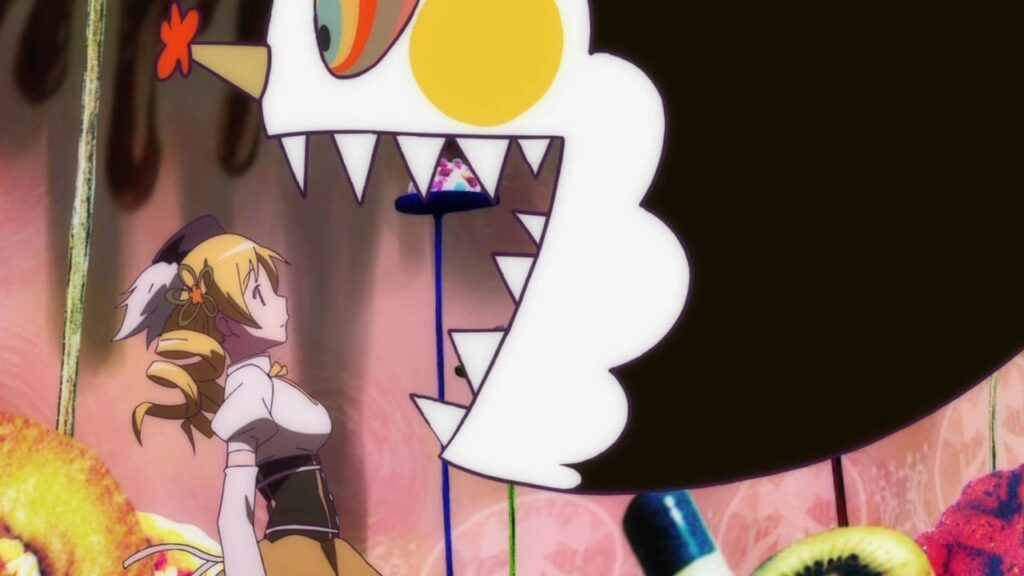
But you’ll never know what the medium is truly capable of if you keep settling for the cheapest imitations of storytelling.
The isekai protagonist who never struggles teaches you to expect easy answers rather than preparing you for challenges. The fanservice objectifies sexuality rather than celebrating it. The power-of-friendship victory undermines actual stakes rather than uplifting them. The archetype characters prevent you from connecting with genuine human complexity rather than offering relatability.
You’re WAY smarter than these anime tropes assume. You’re capable of more than these shows require. And somewhere out there is an anime that will prove it to you—an anime that will trust your intelligence, reward your attention, and remind you why storytelling matters.
But you have to be willing to find it. And you have to stop accepting the garbage that’s blocking your path to it.
The tiring, lazy anime tropes will stop when you stop watching them. Quality will rise when you demand it.
The choice, as always, has been yours all along.
Now go watch something worth your time.
Be sure to check out our VRSUS Facebook Page for more hot takes and fun stuff!
Read More:
Hell’s Paradise: The Dark Fantasy That’s Better Than Demon Slayer – VRSUS
How Anime and Superheroes Became the New Symbols of Philippine Protests – VRSUS
Why G Gundam Deserves A Comeback: The Perfect Antidote to Modern Anime’s Emotional Weight – VRSUS





